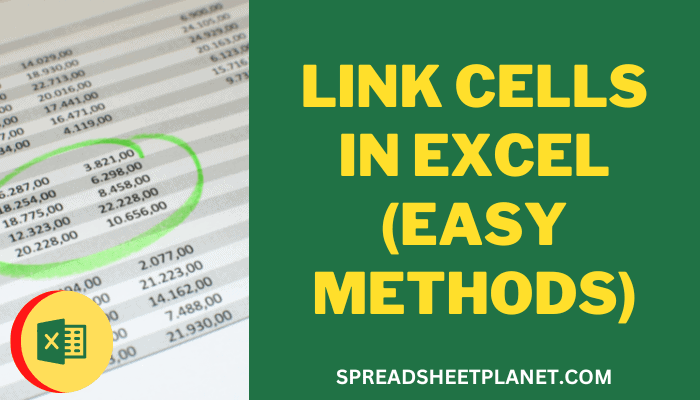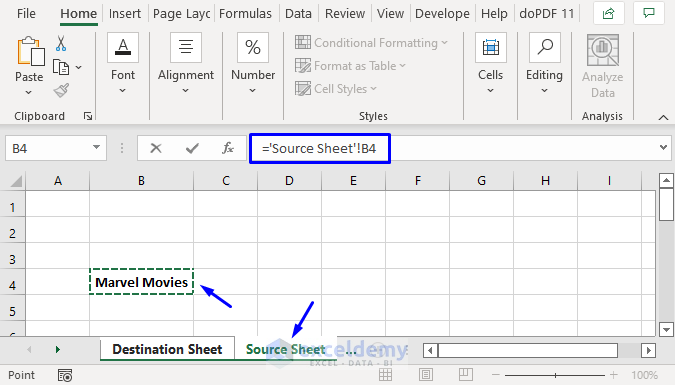Linking Excel Sheets: Simple Guide

In today's interconnected digital environment, mastering the art of linking Excel sheets is an essential skill for enhancing productivity and data management. Whether you're aggregating financial reports, consolidating project updates, or managing inventory, linking spreadsheets can save you time and reduce errors. This comprehensive guide will navigate you through the various methods and best practices for linking Excel sheets, ensuring your data workflows are efficient and error-free.
Why Link Excel Sheets?

Before delving into the 'how', let's understand the 'why'. Here are the key advantages:
- Data Consolidation - Merge data from multiple sources for a comprehensive view.
- Reduced Duplication - Avoid data redundancy, ensuring a single source of truth.
- Automation - Streamline updates across sheets, reducing manual input.
- Improved Reporting - Enhance your reporting capabilities with dynamic, interconnected data.
Now, let's explore the various ways to link Excel sheets.
1. Linking to Another Sheet Within the Same Workbook

This method is the simplest and most commonly used for linking data within a single workbook. Here are the steps:
- Select the cell in your destination sheet where you want the linked data to appear.
- Type "=" to start a formula.
- Click on the cell from the source sheet or navigate to it manually. The formula will automatically populate.
- Press Enter, and the link is established.
Example formula:
=Sheet2!A1
🔗 Note: This type of link updates automatically when the source data changes.

2. Linking to an External Workbook

Sometimes, your data is spread across different Excel files. Here's how to link between them:
- Open both the source and destination workbooks.
- In the destination workbook, go to the cell where you want the linked data to appear.
- Start with "=" and navigate to the source workbook, selecting the desired cell or range.
- Press Enter to complete the link.
Example formula:
=[SourceWorkbook.xlsx]Sheet1!A1
⚠️ Note: Ensure that external workbooks are accessible and in their original location for the links to work.
3. Using External References for Complex Linkages

For more complex data management, you might need to use external references. Here’s how:
| Step | Description |
|---|---|
| Open the Destination Workbook | Open the file where you want to link the external data. |
| Create a New Worksheet | Create a new sheet if necessary for your links. |
| Formulate the Link | Use the formula: =SourceWorkbook.xlsx!SheetName!CellReference |

💾 Note: External references work best when files are in a stable network location or on your local drive.
4. Maintaining Links

Linking sheets is one thing, but maintaining them is another:
- Update Links - When changes occur in the source data, ensure your linked data reflects those changes.
- Editing Links - Use 'Edit Links' under the Data tab to manage, update, or break links.
- Security - Protect your workbook from accidental link changes or deletions.

5. Best Practices for Linking Sheets

- Use Meaningful Names - Name sheets and ranges descriptively to improve readability and maintenance.
- Backup Data - Regular backups prevent data loss due to link corruption.
- Validation - Validate linked data to ensure accuracy and integrity.
Linking Excel sheets is not just about making connections; it's about creating a robust, interconnected system that enhances your data analysis and reporting capabilities. With these methods and best practices, you can:
- Improve workflow efficiency.
- Ensure data integrity across multiple documents.
- Enhance reporting and analysis by consolidating data from various sources.
To wrap up, understanding how to link Excel sheets effectively allows you to harness the full potential of Microsoft Excel, transforming complex data management into a seamless process. By following this guide, you've gained insights into not only the technical aspects of linking sheets but also the strategic importance of maintaining these links for organizational success.
What is the difference between linking and embedding in Excel?

+
Linking refers to connecting data between sheets so that changes in one sheet automatically update in others, while embedding involves copying the data into another workbook as an independent object, which does not reflect changes from the source.
Can I link data from Google Sheets to Excel?

+
Yes, you can link data from Google Sheets to Excel through various methods like using Google Sheets’ publish to web feature or third-party add-ons.
How do I prevent link updates when opening an Excel file?

+
You can disable automatic updates for external links in Excel through File > Options > Trust Center > Trust Center Settings > External Content, and then selecting ‘Disable automatic update of workbook links’.
What happens if the source workbook is moved or renamed?

+
If the source workbook is moved or renamed, the links in your destination workbook will break, and you’ll need to update them manually by editing the link references.
Can linking Excel sheets impact performance?

+
Yes, having numerous linked sheets can slow down your workbook’s performance, especially if the links are to external files or involve complex calculations. Minimize the use of links where possible for better performance.



